How to create an ADHD-friendly home – for a more productive, relaxing space
Experts have shared 8 techniques that can be used to tailor homes to the needs of those with ADHD

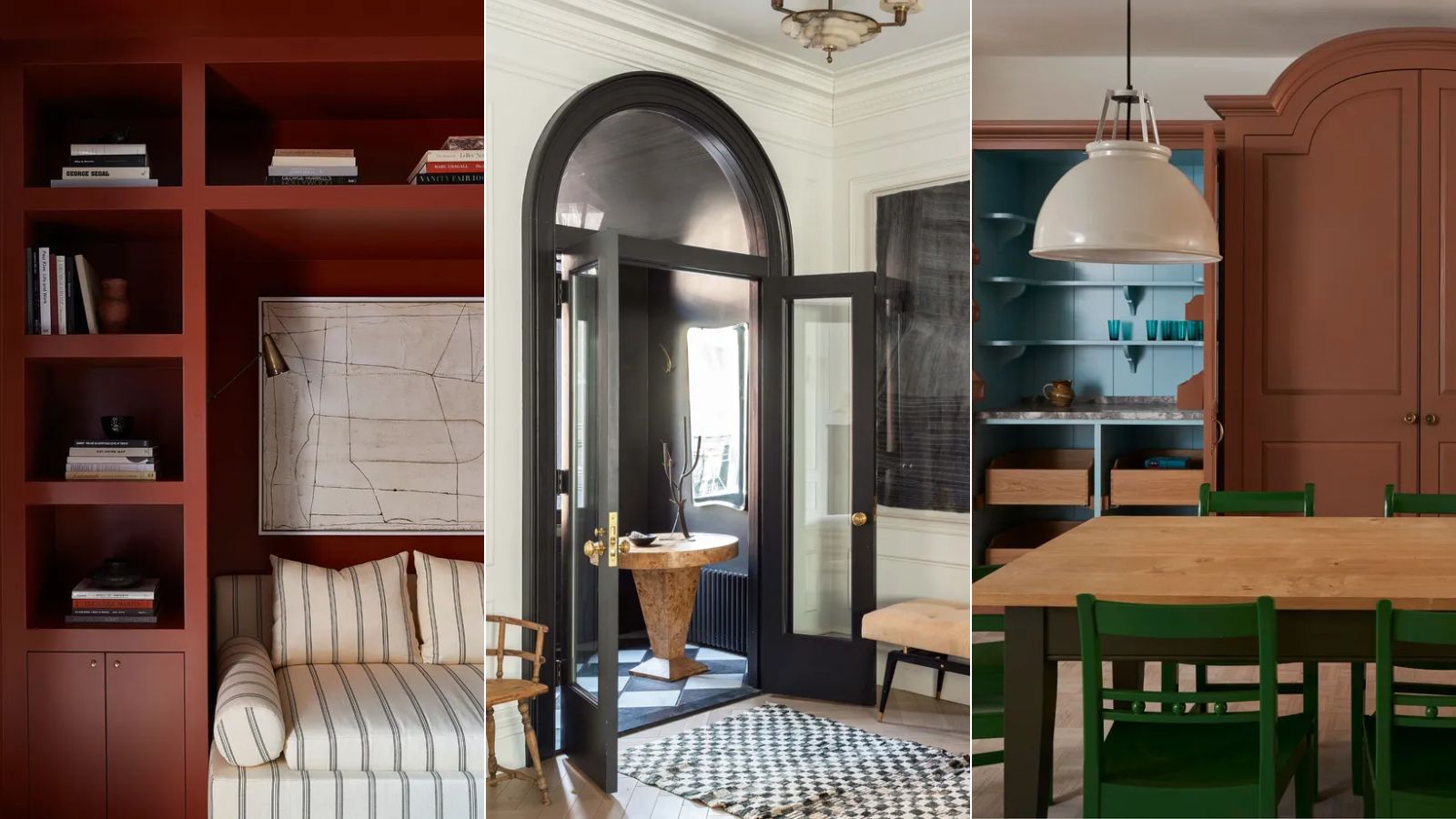
When designing and organizing a home to be ADHD-friendly, the focus should revolve around employing strategies that facilitate daily tasks, alleviate stress, and promote comfort. Since individuals with ADHD often experience chaos in their minds, hindering their ability to focus, the goal is to minimize this in their surrounding environment.
Understanding how to adapt your home to better accommodate ADHD can be a game changer when it comes to making a home more accessible. Designing a home that is soft on the senses can serve as a sanctuary, supporting focus, relaxation, organization, and overall well-being.
We talked to experts about the techniques that can create an ADHD-friendly home. While there are many ways to do this, it's important to remember that they aren’t universal, and different things will work for different people, so it's important to test different methods to see which works best. Below, we've shared some techniques you can experiment with to make your home more ADHD-friendly.
How to create an ADHD-friendly home
'To do this there are three key things you should focus on,' says Dr Stefan Ivantu, an M.D. Psychiatrist at ADHD Specialist. 'These include:
- Minimizing distractions: External stimuli can easily pull your focus away from the task at hand.
- Designing for movement: Feeling restless and needing to move around is a common symptom of ADHD.
- Optimizing spaces for visual processing: Visual clutter and overwhelming environments can make it difficult to concentrate.'
1. Declutter and minimize visual noise
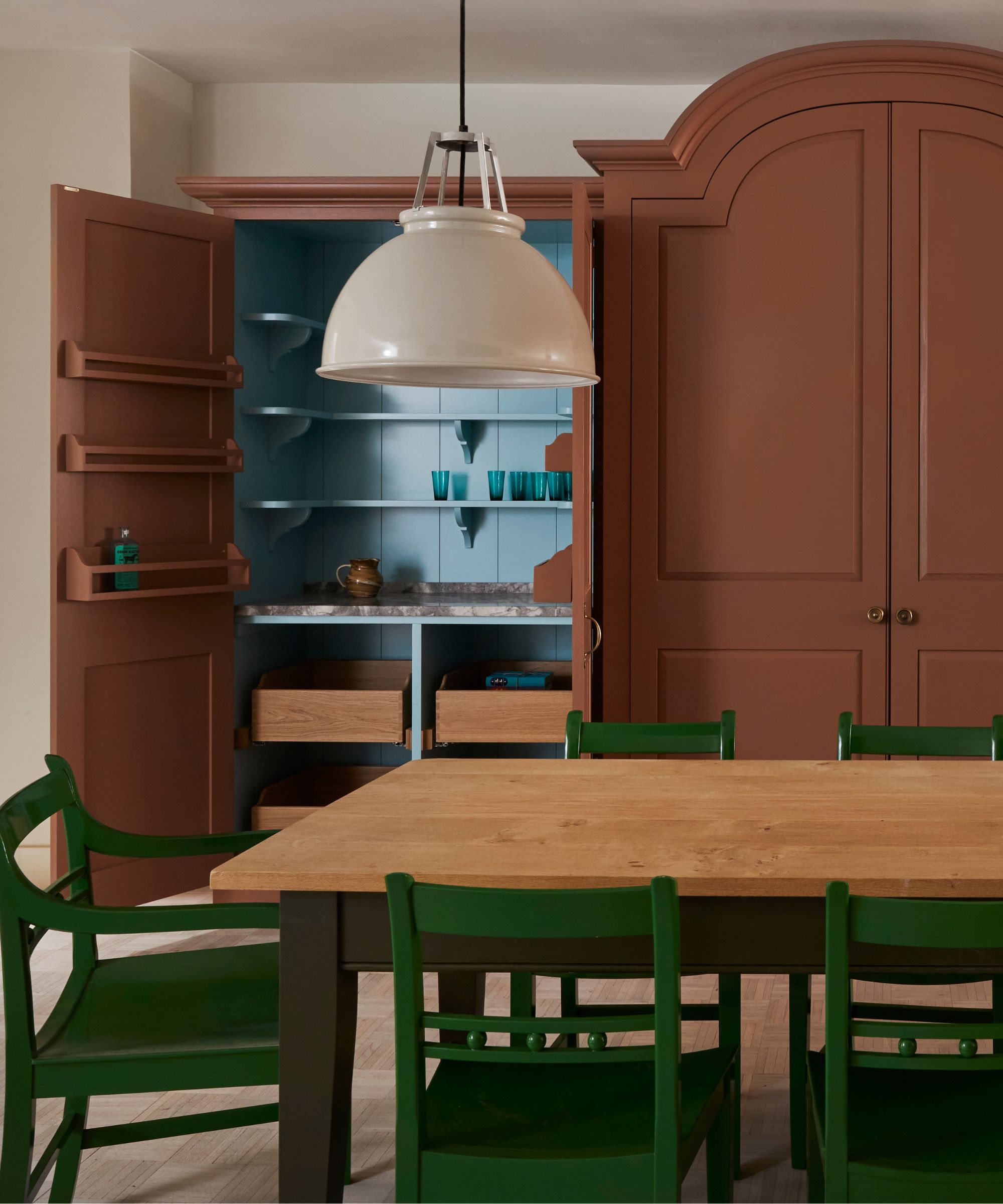
Visual clutter can be overwhelming – it releases the stress hormone cortisol in the brain – and this is particularly true for individuals with ADHD because their brains struggle to filter out irrelevant stimuli, leading to sensory overload and difficulty focusing. Decluttering and minimizing visual noise in the home can help to create a more ADHD-friendly environment by reducing distractions and promoting a sense of calm.
'Consider employing minimalist design principles to create a sense of calm and order,' recommends Dr Stefan Ivantu. 'Put things away after using them, and avoid letting surfaces become dumping grounds. Additionally, dedicate time each day to apply decluttering tips to your living space, such as with a bedroom 'closing shift'.'
Find ways to disguise clutter with doors or curtains. For example, you can reduce visual clutter in your kitchen by choosing closed cabinets over open shelving. Decluttering can also have further reaching effects than simply creating a space that reduces sensory overload and relieves stress. According to the dopamine decluttering method, it can lead to improved mood, motivation, and cognitive function by optimizing dopamine levels.
Design expertise in your inbox – from inspiring decorating ideas and beautiful celebrity homes to practical gardening advice and shopping round-ups.
2. Establish different areas for specific items and activities
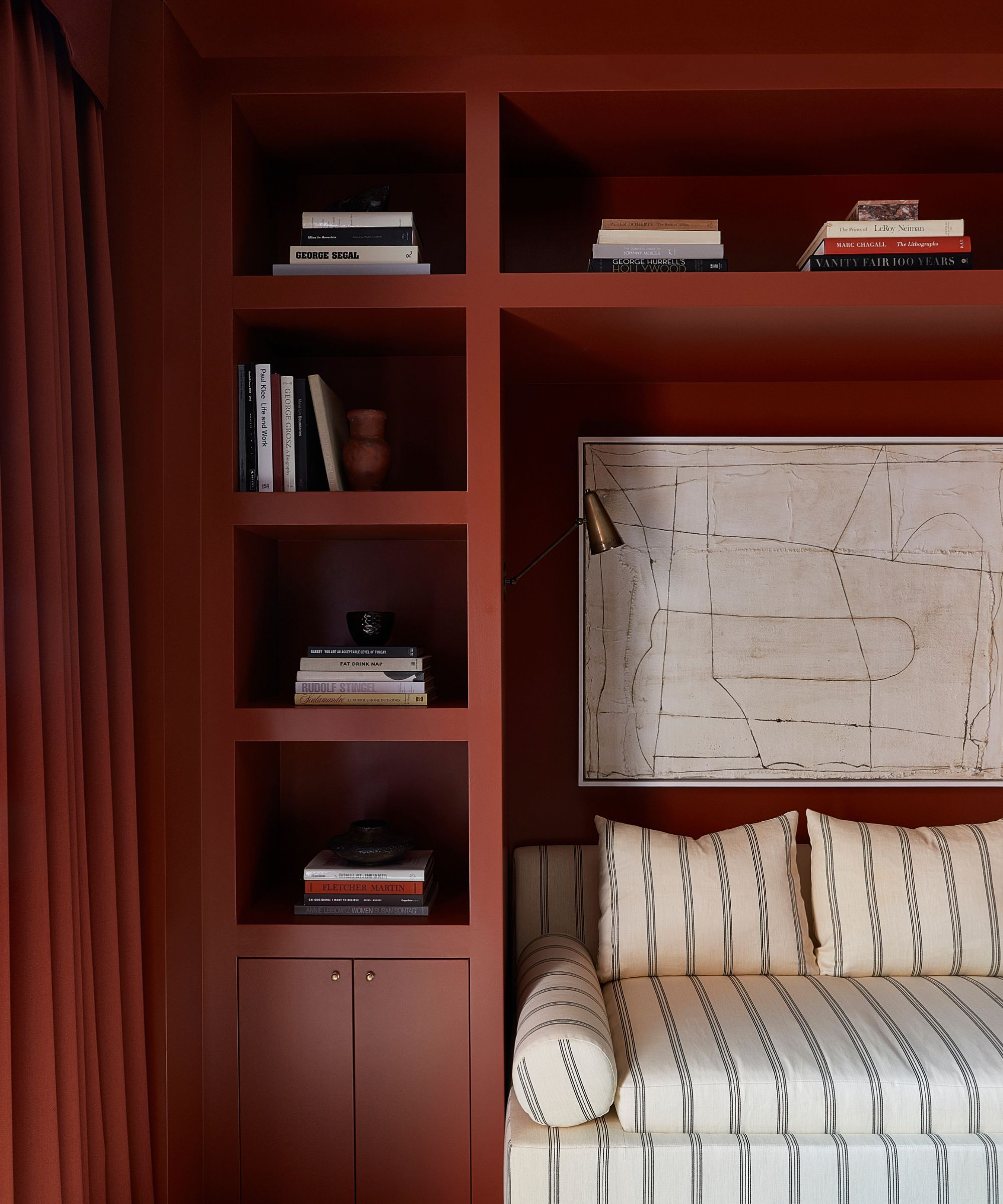
One of the most important things to consider when organizing your home to make it more ADHD-friendly is to find a place for everything and keep it there so it’s easy to find when the person needs it. This can be specific storage ideas for backpacks, keys, wallets, toys, shoes, or coats. Doing this reduces the stress of forgetting certain items or being distracted trying to locate them when they are needed.
Certified ADHD coach at Adventura Coaching, Erika Gillette, advises: 'Create specific spaces for tasks that you struggle to complete. Rather than spending 30 minutes gathering everything you need to sit down and get started, keep everything you need in that space, ready to use all the time.'
'You should also consider building specific areas in your home for different activities,' suggests Dr Stefan Ivantu. 'For example, having a dedicated workspace for work or schoolwork signals to your brain that it's time to focus. Similarly, create a relaxation zone for unwinding and avoid working in bed, which can blur the lines between sleep and wakefulness.'
When designing each specific area, ensuring it has only furnishings and items related to and beneficial for the task being performed can minimize distractions and prevent clutter.

Erika Gillette is a certified personal change coach with specialized training in partnership, time management, and ADHD Coaching.
3. Manage noise levels

Managing noise levels in an ADHD-friendly home is essential since individuals with ADHD often have difficulty filtering out background noise and focusing on tasks. Minimizing noise can help alleviate stress, frustration, and sensory overload, supporting better concentration and cognitive functioning.
There are a few ways you can soundproof a room and minimize sound distractions, such as choosing materials that reduce echoes, opting for soundproof windows and doors, and selecting silent appliances. Dr Stefan Ivantu also recommends: 'Consider using white noise machines to mask background noise.' We recommend this Dreamegg white noise machine from Amazon.
This approach is not limited to work areas but extends to every part of the home to facilitate social interactions and relaxation without overwhelming sensory input.
4. Incorporate strategic lighting
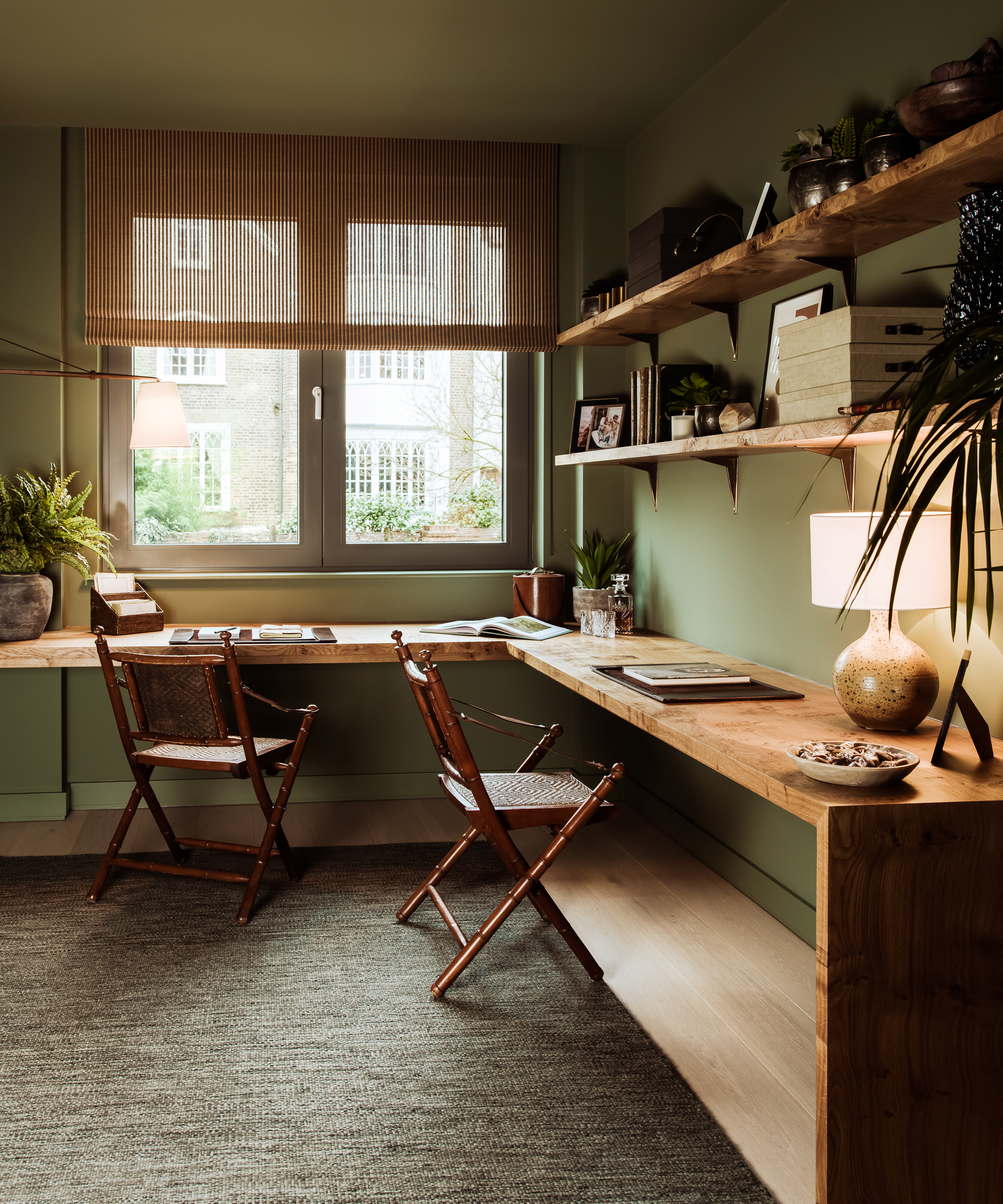
Individuals with ADHD often have light sensitivities and may experience difficulties with attention and focus in environments with harsh or inconsistent lighting. As a result, implementing strategic lighting ideas can help mitigate these challenges and promote better concentration and well-being.
Dr Stefan Ivantu recommends incorporating a combination of task and ambient lighting: 'Task lighting can help improve focus on specific areas or tasks, while ambient lighting can create a more calming atmosphere to promote a more comfortable setting and minimize sensory overload.'
Consider using lamps with adjustable features, such as dimming and color temperature control. These offer flexibility in tailoring the lighting and atmosphere to suit individual preferences, moods, and activities, whether this is brighter lighting for focused tasks or softer lighting for relaxation and unwinding.
Additionally, Dr Stefan Ivantu emphasizes the importance of natural light, recommending finding ways to increase natural light in your home: 'Natural light can improve focus and concentration. If possible, position your workspace near a window, open the curtains to let in sunlight, and decorate with light colors.'
Creating a balance of ambient, task and natural lighting is key to creating visual comfort, and reducing eye strain and fatigue to ensure individuals with ADHD can engage in activities for extended periods of time without experiencing discomfort or visual distraction.
SUPERDANNY LED Desk Lamp | $29.99 from Amazon
This touch control lamp has an adjustable gooseneck, brightness, and color temperature, making it the perfect lamp for promoting focused work.
5. Create sensory zones

Building on the effectiveness of creating zones for dedicated activities for enhancing focus, Erika Gillette also recommends creating sensory zones. 'Many neurodivergent people are particularly aware of extrasensory information – clutter, noise, light, textures, even smells – and it can become overwhelming at just the wrong moment. To create a respite, look for ways to create areas of your home that offer soothing retreats.'
To do this, allocate a specific area in the home where sensory input is minimized, such as one designed with soundproofing, adjustable lighting, minimalist decor, and relaxing sensory additions, like those in an aromatherapy nook.
6. Consider movement chairs and tables
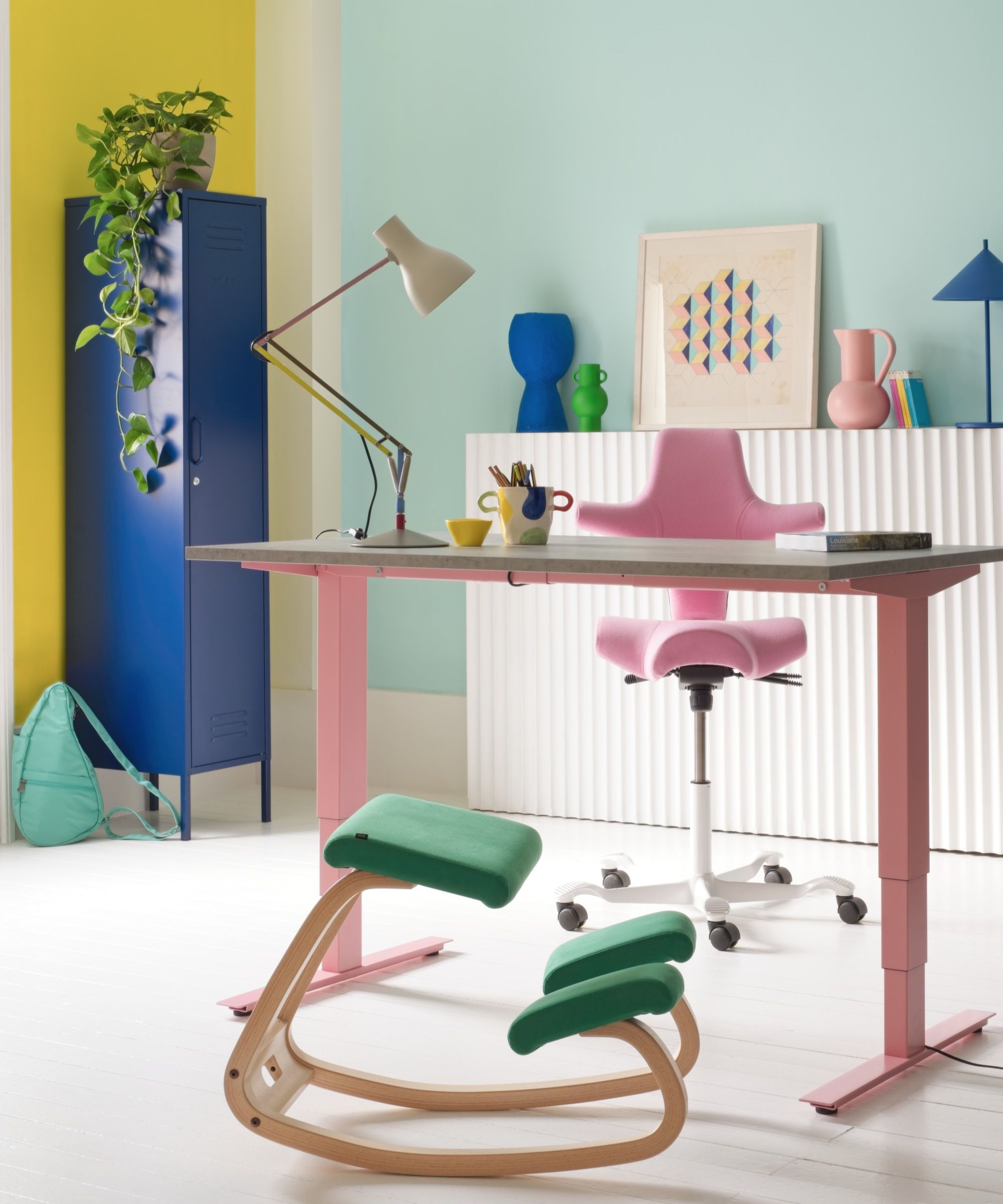
Back in Action Lavoro Special Edition
'Exercise helps the brain with concentration and attention as well as making us feel good, so it shouldn’t be a surprise to know that the same can be said for adding movement in workspaces. Fidgeting helps provide a low level of physiological stimulation that brings our attention and energy to a level that allows our minds to focus better on the task at hand, neurodivergent or not,' explains Romilly Newbound, ergonomics expert for Back in Action.
'This can be implemented via your furniture choices, for example, seating options that encourage movement or a variation in seating positions, whether that’s when sitting at a desk, at the dining table, or reading a book.
'Kneeling chairs and chairs that can twist or tilt are also great ways to incorporate low-level constant movement. They allow your body to move freely and help increase your attention span and brain focus.'
Dr Stefan Ivantu also recommends incorporating stand-up desks into your workspace: 'This allows you to change positions throughout the day and burn some extra energy. There are even adjustable standing desks that allow you to switch between sitting and standing.'
Koree Standing & Height-Adjustable Desk | Was $350.00, now $122.99, from Wayfair
'ADHDers tend to concentrate better when they can self-stimulate,' explains psychologist Gilly Kahn, Ph.D., so applying this to your home office furniture choices can drastically improve focus.
This desk ranges from a minimum height of 28.74" to a maximum height of 48.03", so it can be used at a seated height or for standing, depending on the user and their preferred way of working.
7. Create a command center
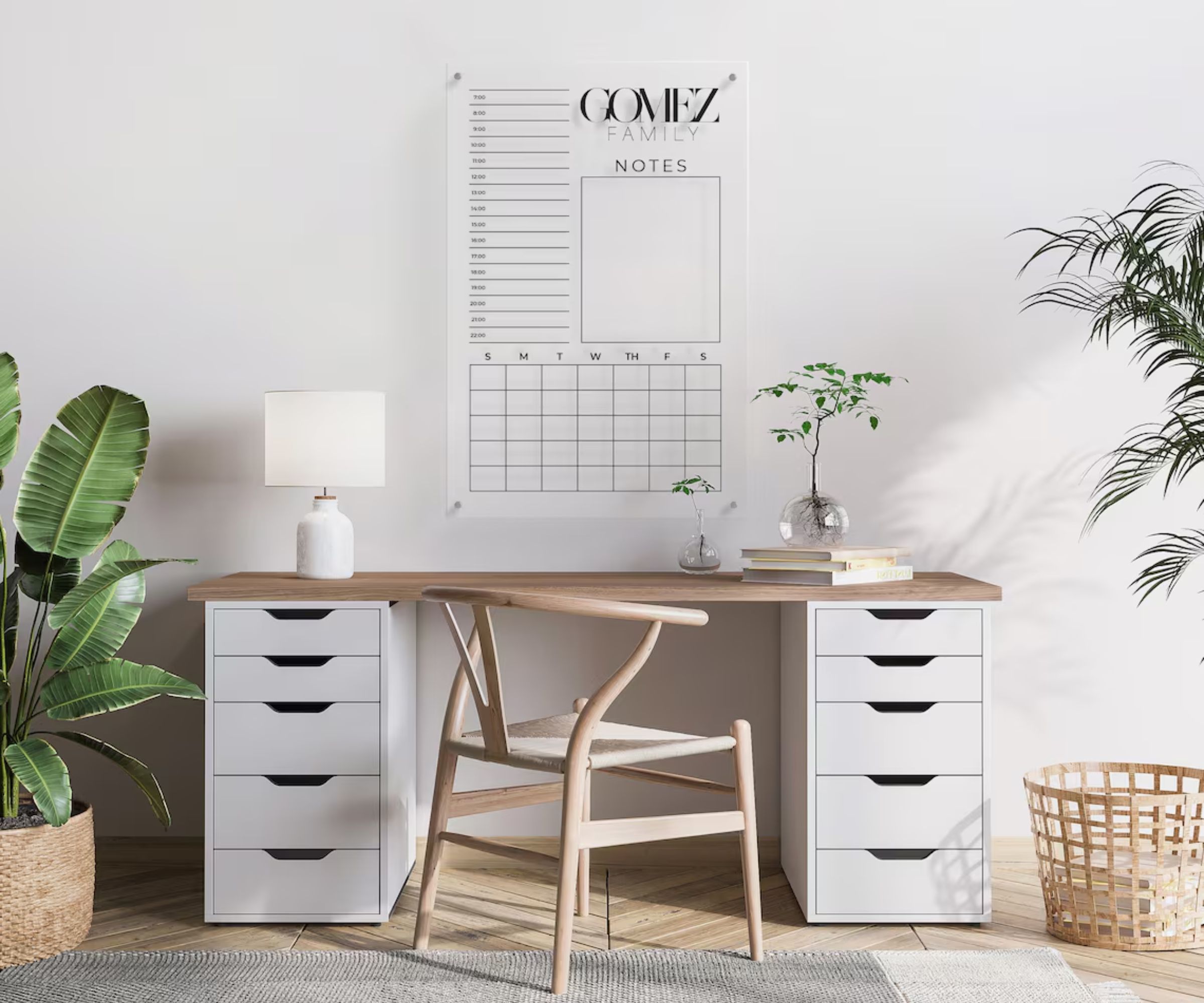
Creating a command center displayed somewhere central in the home can be highly beneficial for individuals with ADHD. It serves as a structured way to organize information and keep track of important events and appointments, to-do lists, schedules, and other responsibilities. This can be transformative for those who struggle with organization and time management because the structure and clarity these provide can simplify managing daily life, reduce stress, and minimize the risk of missing deadlines, commitments, and appointments.
Furthermore, visual cues are usually a powerful helper for people with ADHD, and using color-coding and large whiteboards/chalkboards/tablets to write down important things can be extremely useful.
Command centers can be customized to suit individual preferences to make them easy for the user to understand and manage.
8. Develop sustainable fridge organization

Organizing a refrigerator and creating a system to keep it well-ordered is a great way to manage food inventory effectively and reduce the likelihood of forgetting items to minimize food waste.
'For those with ADHD who find impulsive purchases to be positively stimulating and often forget out-of-sight items, this can be an invaluable thing to implement,' says Petya Holevich, cleaning expert at Fantastic Services.
'To start, pull all the food items out on the counter and sort them into categories, removing anything that has expired. Put items in places where you’ll be able to see them every time you open the refrigerator, preferably at an eye level, and incorporate storage ideas to help you reduce food waste, like labeling. If you buy a new food item you already have, move the old one to the front and put the new one towards the back.
Organize your refrigerator by expiration dates and times. Prioritize fruits, vegetables, and leftovers, as they’re likely to go bad before anything else. Designate one shelf for leftovers so you’ll identify and finish them before they go bad.
The most important thing is to keep a regular inventory of the things you have in your fridge so you know what needs to be eaten first and what you can use. Creating these systems and routines can reduce overstimulation and help individuals monitor what's in the refrigerator to prevent waste and unnecessary purchases.
Finally, Erika Gillette, Certified ADHD coach, says: 'If anything doesn't work, stop doing it – ADHD'ers really do have brains that work differently, and many things that work for other people just won't do. If you just can't seem to get your clean laundry onto the hangers in your closet, seriously consider ditching those hangars for some bins on a shelf, or something else that works.'
It's all about tailoring your space to your specific needs to create an environment that is conducive to relaxation, productivity, and comfort.

Lola Houlton is a news writer for Homes & Gardens. She has been writing content for Future PLC for the past six years, in particular Homes & Gardens, Real Homes and GardeningEtc. She writes on a broad range of subjects, including practical household advice, recipe articles, and product reviews, working closely with experts in their fields to cover everything from heating to home organization through to house plants. Lola is a graduate, who completed her degree in Psychology at the University of Sussex. She has also spent some time working at the BBC.


